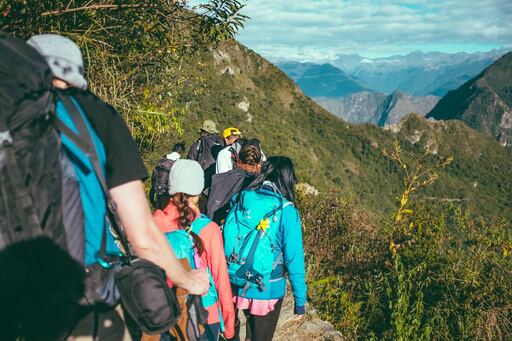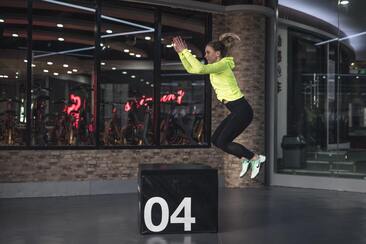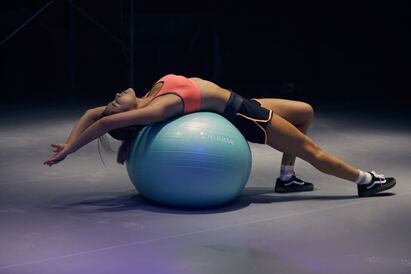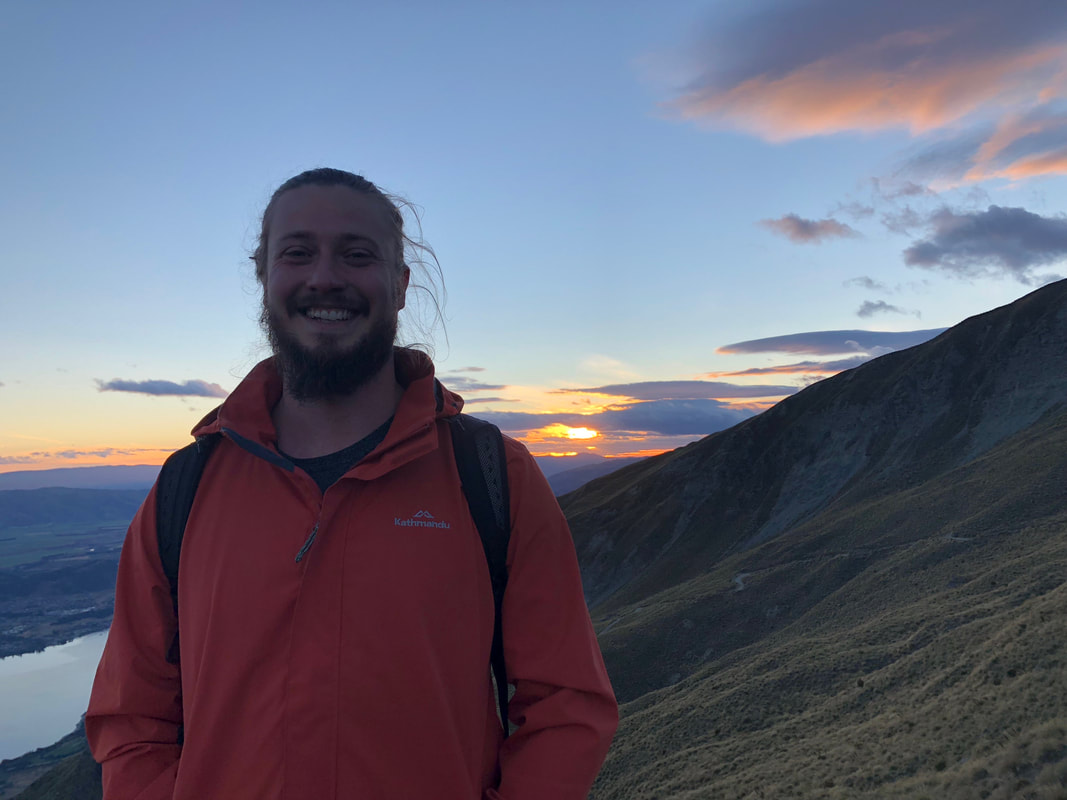|
When it comes to Training For A Trek, there are so many different training methods you can use. And while there will never be one 'best' way of training, there are a number of methods in the trekking world which might seem good in theory, but in the real world are entirely overrated. So today is all about what NOT to do. A list of training methods which are very popular in the trekking world at the moment. Which are commonly recommended by 'trek coaches'. But when you break it down, don't live up to the hype. Training Trekkers Should Avoid In Their Preparation Heart Rate Training What?! An endurance coach who doesn't recommend heart rate training? But the best athletes in the world use this! Are you saying they are wrong? I am expecting a lot of hate mail over this one. But this is what I believe. Yes, heart rate training can be very effective when used right. But for the everyday trekker it is totally unnecessary. Here I could mention the draw backs of heart rate monitoring. The inconsistencies from most devices. How your heart rate is regularly affected by sleep, stress, the weather, caffeine and dehydration. How heart rate zones are often calculated wrong... But without going into all of that, for the everyday trekker, heart rate training is just unnecessarily complicated. The amount of training articles I see which start off telling trekkers the very first thing they need to do is to calculate their maximum heart rate... then their heart rate reserve... then their training zones... and give people these complicated mathematical formulas which they need to complete... it is just so unnecessary! If you love numbers and you already love your heart rate training fine. Go for it. But if not, forget about it! There are plenty of other ways of accurately judging intensity (such as RPE or talk/sing tests) which are much less complicated then this. And the less thought and effort you have to spend on peripheral factors around training, the more focus you can spend on the actual training itself! Jump Training Jump training is exactly what it sounds like. Training the body to jump. This commonly involves exercises like box jumps, squat jumps and lunge jumps. Traditionally it is used to help develop muscular power and rate of force development. Which is beneficial for a number of things and populations. But the way most people use jump training these days (outside of athletic populations) does not do this. Instead, trainers like to program LOTS of repetitions of these exercises, with minimal rest. Which is the exact opposite of how this type of training is supposed to be used. The underlying reason why this is done is simply because it is hard. It gets the legs burning. It gets you huffing and puffing. So it must be good for you? And yes, while this does have some benefits, doing this type of training comes with a HUGELY unnecessary risk of injury. Feet, ankles, knees and backs. So often people pull up in pain from these things. And any type of training that is hurting you, you shouldn't be doing! Jump training has its place if you specifically want to develop muscular power. But if you are using it to develop trekking fitness or muscular endurance, it is not a recommended method of training. For 95% of trekkers, it is overrated. Elevation Masks Elevation or 'altitude' masks are the dumbest thing in the fitness world. I am sure you have seen them. The big black masks people wear on social media, which is supposed to make you 'fitter, stronger, faster, tougher' and just about everything else... And the big claim is, that is will help 'train the body for altitude'. This is a lie. They do nothing to mimic the effects of altitude. And on top of this, they improve no relevant markers of performance for trekkers. The only thing these masks do is restrict your breathing. Which makes things harder. But it does not make you fitter. Or improve your exercise performance. They are a waste of your time. A waste of your money. And a waste of your effort. There is absolutely no reason a trekker should be using an elevation mask in their training. Fasted Training Fasted training is a big thing in the endurance world at the moment. The idea behind it is that if you train in a fasted state (i.e. no food in you) you can teach the body to better utilise your body fat to fuel your exercise (and not have to rely on your quickly depleted stores carbohydrates). And this can work, if done right. But for the every day trekker, it is unnecessary. This is because fasted training is hard! It's difficult to maintain training intensity. You get tired quickly. It drains you psychologically. And it takes a lot of focus and willpower. This type of training might be recommended if you have an extended mountain trip coming up, where pack weight is an issue. And also if you already know that following a restrictive nutrition strategy, will be neither difficult nor stressful for you. If this is you, then go for it. But if you are just an everyday trekker, who is trying to juggle a regular life around your training, then fasted training is unnecessary and overrated. High Intensity Interval Training (HIIT) HIIT is one of the hottest thing in the fitness world at the moment. It is fast. It's fun. And it gets you knackered! And while it can be good for general fitness and weight loss, it is incredibly overrated for trekkers. This is because it is training the completely wrong energy systems. When you are trekking, you are spending 95% of your time using the 'aerobic energy system'. This system uses oxygen to create energy for movement. It is developed by doing low intensity, long duration training. When you are training HIIT you are using the anaerobic energy systems. Which is only used rarely while you are trekking. And while yes, this type of training does help improve your aerobic fitness as well, this is only a side product. And there are MUCH more effective ways of developing this. On top of this, some people like to argue that HIIT can help you 'breathe at altitude'. Simply because if you are huffing and puffing at sea level, is must help you when you are huffing and puffing on the mountain! But is does not work like that. And again, there are much better ways of helping this, HIIT training does have it's place. And if used strategically and in small doses, it can be effective for trekkers. But it should never be the sole focus of a trekkers training. And it should never replace longer duration, low intensity training. Unstable Surface Training A funny trend in the fitness world is unstable surface training. This involves using 'unstable' training tools like Swiss balls, Bosu balls or balance boards. People often claim training on these will 'increase muscle activation', 'train your core' or 'improve stability'. But these are only half truths. Yes, using this type of training can be useful in specific situations. For example, it can be great at certain stages in ankle rehab. However, many people in the trekking world try to combine these tools with their strength training. And claim that by combining these two types of training, will do a number of amazing things. But this is a mistake. This is because unstable surfaces can reduce overall muscular power output. Meaning your muscles can't produce as much force. So even if an exercise feels 'harder' on these surfaces, you will be severely compromising your ability to provide stimulus to your muscles, and take advantage of the number of amazing benefits strength training has to offer. If you want to include unstable surface training in your program, please do it separately. And do not make the mistake of confusing it with strength work. BONUS: Burpees Burpees are the single most overrated exercise in the entire fitness world. And there is absolutely no reason a trekker needs to be doing these in their training.
Burpees put a huge amount of unnecessary stress through the knees, back, shoulders and wrists. And if you don't have the necessary mobility and movement competency (which the majority of people lack) they carry a very high risk of injury. And there are so many safer, and more effective, options to develop the same benefits as burpees. For example... If you want to develop lower body power (i.e. the 'jump portion') a more effective, and safer, exercise is a simple jump squat. If you want to develop upper body strength (i.e. the push up part) simply doing a bench press or dumbbell press is a much better option. Or if you are looking for cardiovascular development (i.e. getting huffed and puffed) getting on the exercise bike or rower is much safer and more effective alternative. There is no reason a trekker should be doing burpees in their training. Every training method has its place and time. And it is up to you (or your coach) to use them appropriately. Hopefully now you have a better understanding of some of the common training recommendations in the trekking world and why they might not hold as much value as you might have first thought. So you can apply this knowledge to your training and ensure you are doing the right things to prepare yourself for a safe, enjoyable and successful trek!
Ian
6/11/2020 04:31:03 am
Thank you for clarifying what is NOT needed when training for hiking. It’ll assist me a lot.
Rowan
6/11/2020 03:01:42 pm
I hope it does Ian! If you wanted to know what to substitute instead of these things, you should find plenty of info in the other articles on this blog. Or feel free to reach out anytime and I am more than happy to have a chat :) Comments are closed.
|
AuthorRowan is a personal trainer who specialises in training for hiking, trekkers and mountaineers for their bucket list adventures. Archives
July 2024
Categories
All
|
AboutSummit Strength is a personal training for hiking service created specifically to help hikers have the best chance of a safe, enjoyable and successful adventure.
|
Company |
Services |
|
|
© COPYRIGHT 2018. ALL RIGHTS RESERVED.
|
Website Design by My Personal Trainer Website
|










 RSS Feed
RSS Feed
